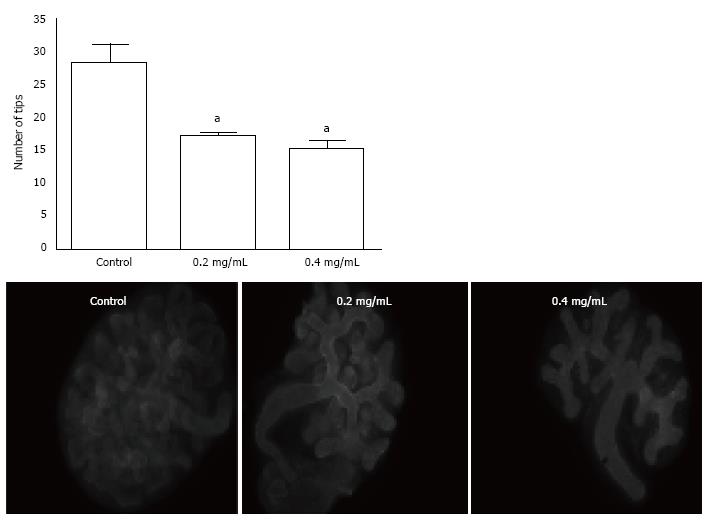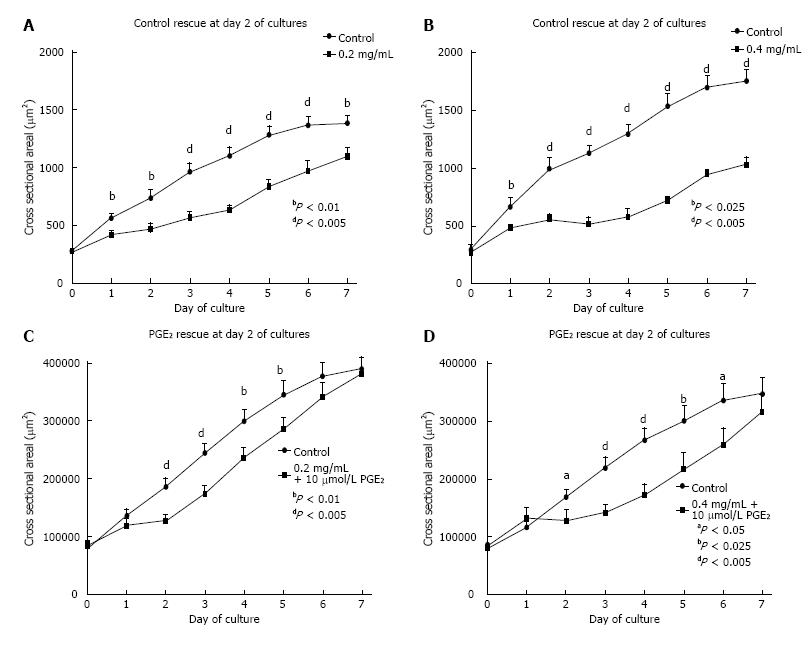Copyright
©The Author(s) 2017.
Figure 1 Growth curves for cross section area for acetylsalicylic acid treatments.
Cross-section metanephroi area was used to produce growth curves of individual ASA treatments and their contralateral controls (n = 8-12). Controls are represents together as there were no differences between controls of each treatment group. aP < 0.05, bP < 0.005 denotes statistical differences with control organs. ASA: Acetylsalicylic acid.
Figure 2 Assessment of epithelial branching.
Fetal kidneys were grown for 48 h in the presence of 0.2 mg/mL or 0.4 mg/mL ASA (n = 3 and 4 respectively; Controls n = 5). Organs were fixed and processed for laminin labelling. Upper panel shows mean number of tips counted per group. aP < 0.05, denotes statistical differences with control organs. Lower panel shows an example image of a control, 0.2 mg/mL or 0.4 mg/mL ASA exposed organ. ASA: Acetylsalicylic acid.
Figure 3 Growth curves for cross section area of embryonic kidneys initially treated with acetylsalicylic acid followed by “rescue” treatment.
Cross-section metanephroi area were used to produce growth curves of individual embryonic kidneys treated with 0.2 mg/mL (A and C) or 0.4 mg/mL (B and D) ASA from days 0-2, then rescued with either control media alone (A and B) or control media plus 10 μmol/L PGE2 (C and D) during culture days 3-7. All embryonic kidneys in culture were compared against their contralateral controls that were exposed to control culture medium from days 0-7 (n = 8-12). ASA: Acetylsalicylic acid.
- Citation: Welham SJM, Sparrow AJ, Gardner DS, Elmes MJ. Acetylsalicylic acid interferes with embryonic kidney growth and development by a prostaglandin-independent mechanism. World J Nephrol 2017; 6(1): 21-28
- URL: https://www.wjgnet.com/2220-6124/full/v6/i1/21.htm
- DOI: https://dx.doi.org/10.5527/wjn.v6.i1.21











